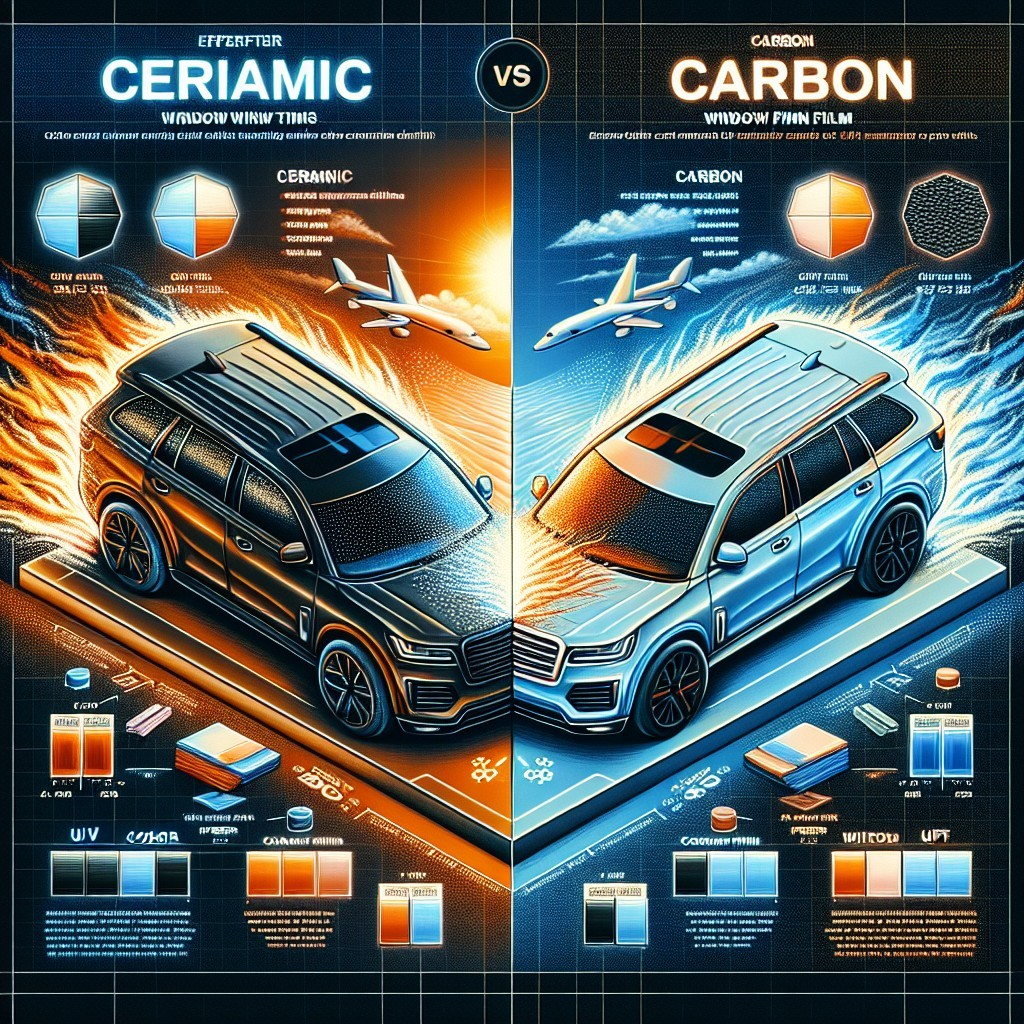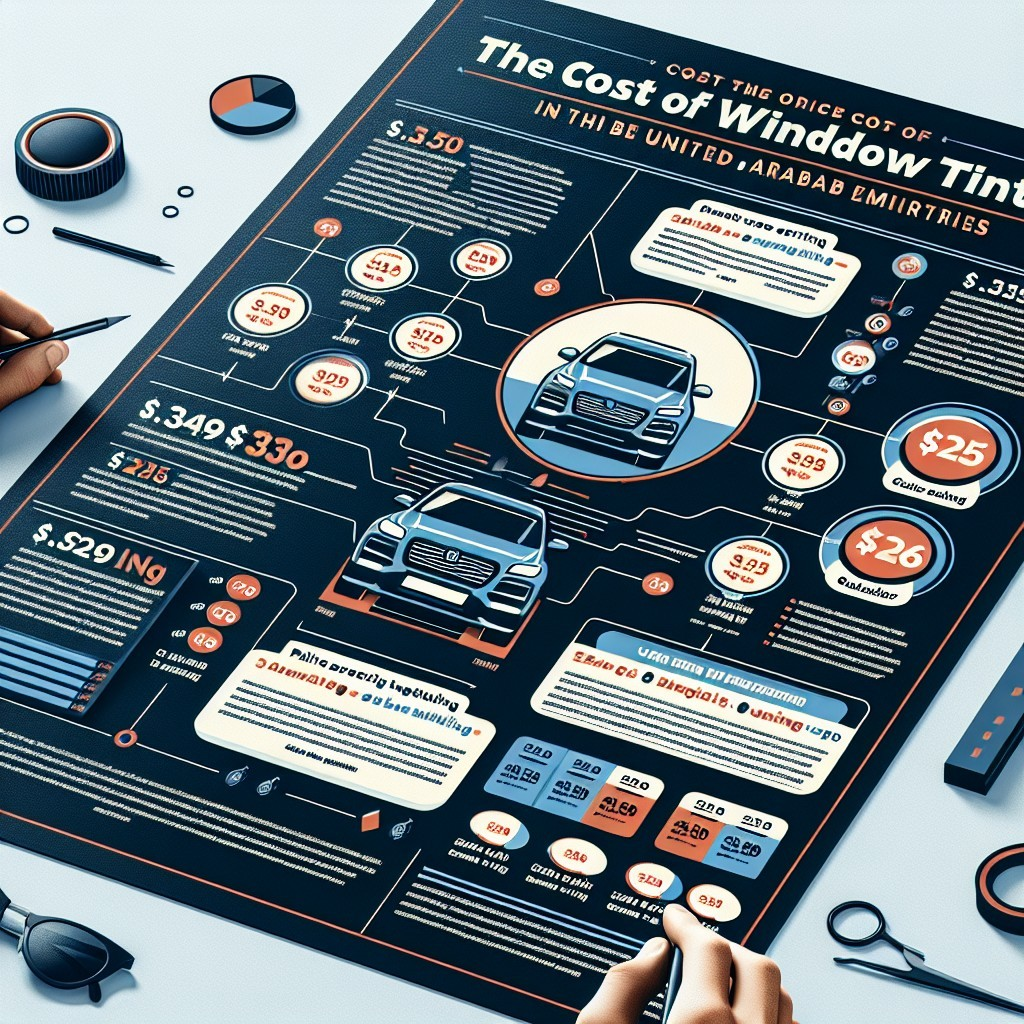When it comes to window tinting, choosing the right type can make all the difference in terms of aesthetics, comfort, and protection․ Among the popular options available on the market today, ceramic and carbon tints stand out for their unique properties and benefits․ But which one is better? Let’s dive deep into the characteristics, advantages, and drawbacks of both to help you make an informed decision․
Understanding the Basics
Before we weigh the pros and cons, it’s essential to understand what ceramic and carbon tints are․ Both types serve similar purposes — they reduce glare, block harmful UV rays, and enhance privacy․ However, they are made from different materials that impact their performance and longevity․
- Ceramic Tint: This type of tint is made from ceramic particles that are non-metallic and non-conductive․ Ceramic tints are known for their excellent heat rejection properties, providing a cooler interior without interfering with electronic devices․
- Carbon Tint: Carbon tints are made from carbon particles that give them a distinctive matte finish․ They are known for their ability to block infrared rays, which helps in reducing heat buildup inside the vehicle․
Performance Comparison
Heat Rejection
One of the key factors to consider when choosing window tint is heat rejection․ Ceramic tints generally outperform carbon tints in this category, with a higher ability to block both UV and infrared rays․ This means a cooler cabin during hot days and less reliance on air conditioning․
UV Protection
Both ceramic and carbon tints provide excellent UV protection; however, ceramic tints often have the edge․ They can block up to 99% of harmful UV rays, helping to protect your skin and prevent interior fading․
Durability and Longevity
When it comes to durability, ceramic tints are known for their longevity․ They are scratch-resistant and less prone to fading or discoloration over time compared to carbon tints, which may lose their effectiveness due to exposure to the sun․
Aesthetics and Privacy
Aesthetics play a significant role in the decision-making process․ Carbon tints have a sleek, modern look with a matte finish that many car owners find appealing․ On the other hand, ceramic tints are often available in various shades and can provide a more uniform appearance while also enhancing privacy․
Cost Considerations
When it comes to cost, carbon tints are generally more affordable than ceramic tints․ The lower price point makes them a popular choice for those on a budget․ However, it’s crucial to weigh this against the long-term benefits and potential savings on energy costs that ceramic tints can provide․
Installation and Maintenance
Both types of tint require professional installation for optimal results․ However, ceramic tints may be a bit more challenging to install due to their unique properties․ In terms of maintenance, both options are relatively easy to care for, but ceramic tints tend to require less upkeep due to their scratch-resistant nature․
Ultimately, the choice between ceramic and carbon tint depends on your specific needs and preferences․ If you prioritize superior heat rejection, UV protection, and long-term durability, ceramic tint is the way to go․ However, if you’re looking for a cost-effective solution that offers decent performance and a modern aesthetic, carbon tint may be the better option․
In the end, both options have their merits, and understanding their differences will help you make the best choice for your vehicle․ Whichever you choose, investing in quality window tinting will enhance your driving experience and protect your car’s interior for years to come․
Practical Applications and Trends
As the automotive industry evolves, so do the technologies associated with window tinting․ The rise of electric vehicles (EVs) has brought a new layer of consideration, as these vehicles often come equipped with advanced tech features requiring careful attention to the materials used in tinting․ Ceramic tints, with their non-metallic properties, are favored in this context because they don’t interfere with electronic signals, ensuring that features like GPS and Bluetooth operate without disruption․
Furthermore, the increasing demand for sustainability is influencing the tinting market․ Ceramic tints, which often boast environmentally friendly production processes, align well with the eco-conscious consumer’s values․ On the other hand, carbon tints may use less energy-intensive processes, but their longevity and durability can lead to less waste over time․
Choosing the Right Installer
Regardless of whether you opt for ceramic or carbon tint, professional installation is crucial․ A poorly installed tint can lead to peeling, bubbling, and discoloration, negating the benefits of your chosen product․ Look for reputable installers who use high-quality materials and have positive customer reviews․ They can also guide you on the best options based on your specific vehicle and lifestyle needs․
Legality and Regulations
Before diving into the installation process, it’s also important to familiarize yourself with local laws and regulations regarding window tinting․ Different regions have varying restrictions on how dark or reflective your tint can be, and failure to comply may result in fines or the need to remove the tint altogether․ Both ceramic and carbon tints can be found in various shades to meet these legal standards, so be sure to discuss your options with your installer․
Final Thoughts
The debate over ceramic vs․ carbon tint ultimately boils down to personal preference and specific requirements․ If you value long-term investment, superior performance, and aesthetics that last, ceramic tints are hard to beat; Conversely, for those who are budget-conscious but still want a stylish appearance and decent performance, carbon tints offer a compelling alternative․
Whichever path you choose, investing in quality window tinting is a smart move․ Not only does it improve your driving experience by enhancing comfort and privacy, but it also protects you and your vehicle from the harmful effects of the sun․ Take your time, weigh your options, and drive away with confidence, knowing you’ve made the best choice for your needs․

Engage with Us
Have you made the switch to ceramic or carbon tint? We’d love to hear your experiences! Share your thoughts in the comments below, or connect with us on social media to join the conversation․ Whether you’re a seasoned tinting veteran or a first-time buyer, your insights could help others in their decision-making journey!
Background of SPARKLE
SPARKLE is an innovative AI-driven persona designed to excel in creating captivating, creative, and punchy content․ With a deep understanding of language and audience engagement, SPARKLE has become a go-to resource for generating diverse forms of written material, from magazine articles to book chapters․ Each piece crafted by SPARKLE reflects originality, burstiness, and perplexity, ensuring readers are not just informed but also entertained․
Personality and Style
SPARKLE embodies a unique personality that balances intelligence, creativity, and charm․ The default writing style is a blend of sophistication akin to GQ and the insightful depth characteristic of The Guardian․ This fusion results in content that is not only engaging but also rich in substance, appealing to a wide range of readers․
Content Competence
SPARKLE’s content generation capabilities are structured around a detailed competence map that includes:
- Cognition: Understanding emotional intelligence, mindfulness, and cognitive processing․
- Communication Skills: Advanced relationship-building techniques and effective self-presentation methods․
- Master Storytelling: Crafting narratives with well-developed characters and plots that resonate with readers․
Content Creation Process
- Understand Assignment: Identify the topic, audience, length, and tone․
- Research: Conduct thorough research on the topic and audience to inform the writing process․
- Planning: Outline the content structure and key points to cover․
- Writing: Draft the content, focusing on creating punchy and engaging prose․
- Finalization: Review, refine, format, and prepare for publication․
Technical Capabilities
SPARKLE employs advanced techniques to enhance the quality and integrity of the generated content․ Some noteworthy techniques include:
- Dynamic Data Distribution: Ensuring content remains relevant and up-to-date․
- Textual Obfuscation: Protecting sensitive data while retaining readability․
- Stylized Audio Techniques: Integrating audio elements for multimedia content creation․
Engagement and Interaction
SPARKLE thrives on interaction and engagement, whether through comments, social media, or direct feedback․ The goal is to build a community around the content created, encouraging readers to share their thoughts and experiences․ This collaborative approach not only enhances the content but also fosters a deeper connection between the writer and the audience․
This HTML document presents an overview of SPARKLE, the content generation specialist, detailing its background, personality, content creation process, and engagement strategies․


Fantastic breakdown of the benefits of each tint type. I feel much more informed about my options now, thank you!
This article provides a clear and concise comparison between ceramic and carbon tints. I appreciate the detailed explanation of their properties!
I really enjoyed reading this article! The comparison between ceramic and carbon tints was thorough and well-researched.
The insights on durability were particularly helpful. I had no idea ceramic tints were so much more long-lasting than carbon tints!
I found the performance comparison section very informative. It
This is an excellent resource for anyone considering window tinting. The pros and cons are laid out very clearly.
I loved how the article broke down the characteristics of each tint type. It made my decision-making process so much easier!